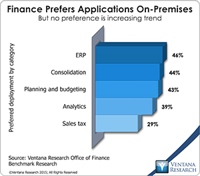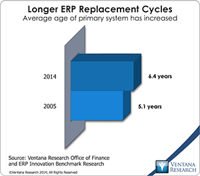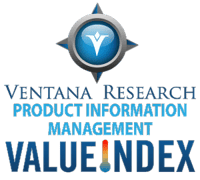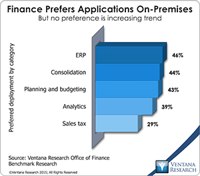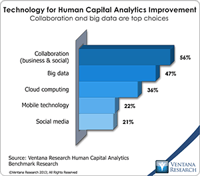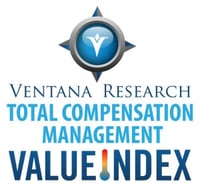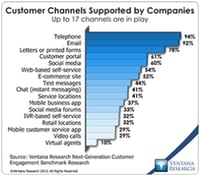In today’s data-driven world, organizations need real-time access to up-to-date, high-quality data and analysis to keep pace with changing market dynamics and make better strategic decisions. By mining meaningful insights from enterprise data quickly, they gain a competitive advantage in the market. Yet, organizations face a multitude of challenges when transitioning into an analytics-driven enterprise. Our Analytics and Data Benchmark Research shows that more than one-quarter of organizations...
Read More
Topics:
embedded analytics,
Analytics,
Business Intelligence,
IBM,
IBM Watson,
AI & Machine Learning
IBM’s THINK conference, just held this February in San Francisco, is IBM's annual user conference. THINK is designed to showcase upcoming product updates and releases from IBM, along with provide best practices on a wide range of topics. While many technologies were on display, there is one topic in particular I wanted to cover this year: Blockchain.
Read More
Topics:
Office of Finance,
IBM,
Financial Performance Management,
FPM,
Digital Technology,
blockchain
Workday Financial Management (which belongs in the broader ERP software category) appears to be gaining traction in the market, having matured sufficiently to be attractive to a large audience of buyers. It was built from the ground up as a cloud application. While that gives it the advantage of a fresh approach to structuring its data and process models for the cloud, the product has had to catch up to its rivals in functionality. The company’s ERP offering has matured considerably over the...
Read More
Topics:
Microsoft,
SAP,
ERP,
FP&A,
Human Capital,
NetSuite,
Office of Finance,
Reporting,
close,
Controller,
dashboard,
Tax,
Operational Performance,
Analytics,
Business Intelligence,
Business Performance,
Cloud Computing,
Collaboration,
Financial Performance,
IBM,
Oracle,
Uncategorized,
CFO,
Data,
Financial Performance Management,
FPM,
Intacct,
Spreadsheets
The enterprise resource planning (ERP) system is a pillar of nearly every company’s record-keeping and management of business processes. It is essential to the smooth functioning of the accounting and finance functions. In manufacturing and distribution, ERP also can help plan and manage inventory and logistics. Some companies use it to handle human resources functions such as tracking employees, payroll and related costs. Yet despite their ubiquity, ERP systems have evolved little since their...
Read More
Topics:
Big Data,
Microsoft,
SAP,
Social Media,
Supply Chain Performance,
ERP,
FP&A,
Human Capital,
Mobile Technology,
NetSuite,
Office of Finance,
Reporting,
close,
closing,
Controller,
dashboard,
Reconciliation,
Operational Performance,
Analytics,
Business Collaboration,
Business Intelligence,
Business Performance,
Cloud Computing,
Collaboration,
Financial Performance,
IBM,
Oracle,
Uncategorized,
CFO,
Data,
finance,
Financial Performance Management,
FPM,
Intacct
The importance of product information management (PIM) has become clear in recent years and especially as it relates to master data management. As I recently wrote handling this business process effectively and using capable software should be priorities for any organization in marketing and selling its products and services but also interconnecting the distributed supply chain. Our research on product information management can help organizations save time and resources in efforts to ensure...
Read More
Topics:
Big Data,
Master Data Management,
Sales Performance,
Supply Chain Performance,
Enterworks,
Marketing,
Operational Performance Management (OPM),
Stibo Systems,
Webon,
Business Performance,
CIO,
Financial Performance,
IBM,
Informatica,
Information Management,
Oracle,
Information Optimization,
Product Information Management,
Riversand
Whatever Oracle’s cloud strategy had been the past, this year’s OpenWorld conference and trade show made it clear that the company is now all in. In his keynote address, co-CEO Mark Hurd presented predictions for the world of information technology in 2025, when the cloud will be central to companies’ IT environments. While his forecast that two (unnamed) companies will account for 80 percent of the cloud software market 10 years from now is highly improbable, it’s likely that there will be...
Read More
Topics:
Microsoft,
Predictive Analytics,
Sales Performance,
SAP,
Supply Chain Performance,
ERP,
Human Capital,
Mobile Technology,
NetSuite,
Office of Finance,
Reporting,
close,
closing,
Controller,
dashboard,
Tax,
Customer Performance,
Operational Performance,
Analytics,
Business Collaboration,
Business Intelligence,
Cloud Computing,
Collaboration,
IBM,
Oracle,
Business Performance Management (BPM),
CFO,
Data,
finance,
Financial Performance Management (FPM),
Financial Performance Management,
FPM,
Intacct
Big data has become a big deal as the technology industry has invested tens of billions of dollars to create the next generation of databases and data processing. After the accompanying flood of new categories and marketing terminology from vendors, most in the IT community are now beginning to understand the potential of big data. Ventana Research thoroughly covered the evolving state of the big data and information optimization sector in 2014 and will continue this research in 2015 and...
Read More
Topics:
Big Data,
MapR,
Predictive Analytics,
Sales Performance,
SAP,
Supply Chain Performance,
Human Capital,
Marketing,
Mulesoft,
Paxata,
SnapLogic,
Splunk,
Customer Performance,
Operational Performance,
Business Analytics,
Business Intelligence,
Business Performance,
Cloud Computing,
Cloudera,
Financial Performance,
Hortonworks,
IBM,
Informatica,
Information Management,
Operational Intelligence,
Oracle,
Datawatch,
Dell Boomi,
Information Optimization,
Savi,
Sumo Logic,
Tamr,
Trifacta,
Strata+Hadoop
Most HR technology practitioners and vendors attend the annual HR Technology Conference and Exposition. One of the largest industry gatherings, it provides an indicator of their levels of investment and the hottest trends. This year’s event revealed new technologies and approaches to two key human resources processes – recruitment and retention. They included predictive analytics and big data as well mobile delivery to allow employees easier access to applications. Regarding the first two,...
Read More
Topics:
Social Media,
Kronos,
Peoplefluent,
Recruiting,
Wearable Computing,
Fuel50,
Operational Performance,
Smart Watches,
Analytics,
Business Analytics,
Business Collaboration,
Business Intelligence,
Business Performance,
Cloud Computing,
Financial Performance,
IBM,
Oracle,
Workforce Performance,
Ceridian,
HireVue,
Saba,
HR Tech,
HR Technology Conference,
Qualtrics,
Tanner Labs
Now available from Ventana Research is our Value Index on Total Compensation Management for 2014. Total compensation management directly addresses one of an organization’s largest investments – employee pay. As such it is a critical activity for supporting other human capital management and talent management processes.
Read More
Topics:
SAP,
Human Capital Management,
Kenexa,
Peoplefluent,
SuccessFactors,
Decusoft,
Towers Watson,
Analytics,
Business Analytics,
Business Collaboration,
Cloud Computing,
Financial Performance,
IBM,
Mobility,
Oracle,
Workforce Performance,
Compensation,
SumTotal Systems,
TCM,
Value Index,
beqom,
Pay for Performance
During recent IBM analyst big data event, I learned about a new product, IBM Predictive Customer Intelligence. It extracts and processes customer-related data from multiple sources to analyze customer-related activities and has capabilities to predict customer behavior and actions. Predictive Customer Intelligence is built on IBM’s big data platform and supports extraction and integration of data from multiple sources, internal and external, and from structured and unstructured data. It can...
Read More
Topics:
Social Media,
Customer Analytics,
Customer Experience,
Voice of the Customer,
IBM Predictive Customer Intelligence,
Analytics,
Business Analytics,
Business Intelligence,
Cloud Computing,
Collaboration,
Customer & Contact Center,
Customer Service,
IBM,
Information Applications,
Call Center,
Contact Center,
Contact Center Analytics,
IBM Watson,
Text Analytics



